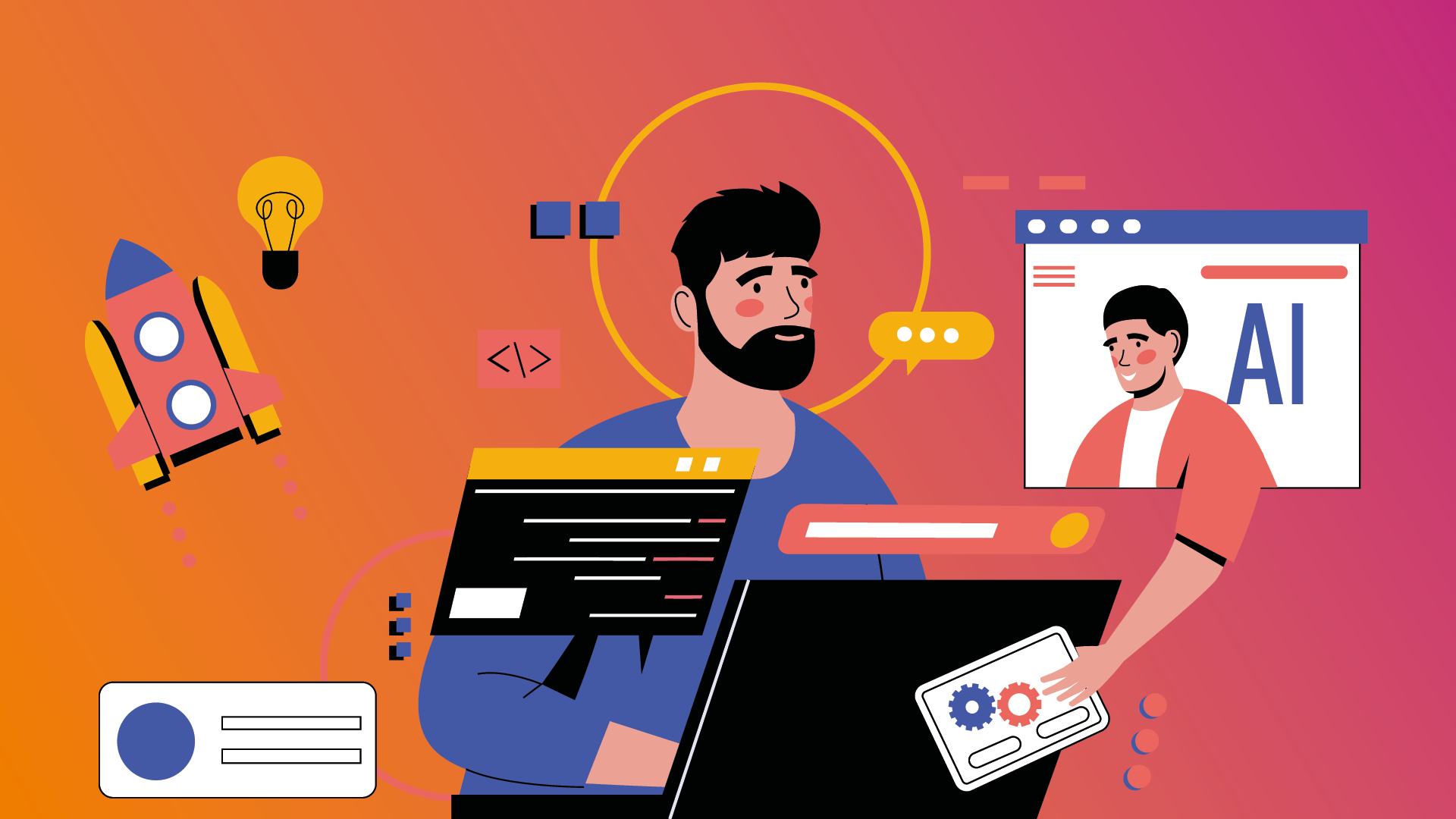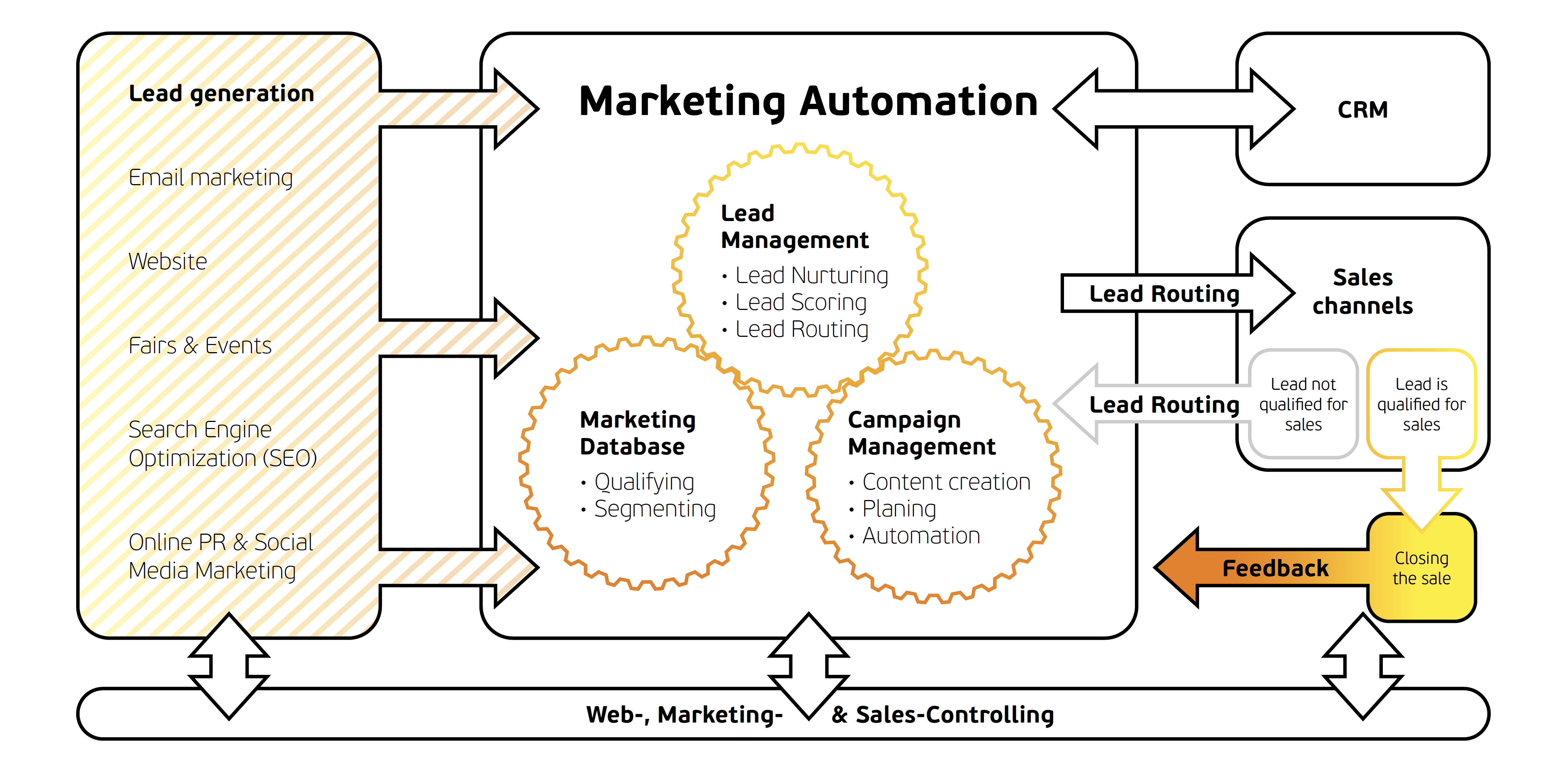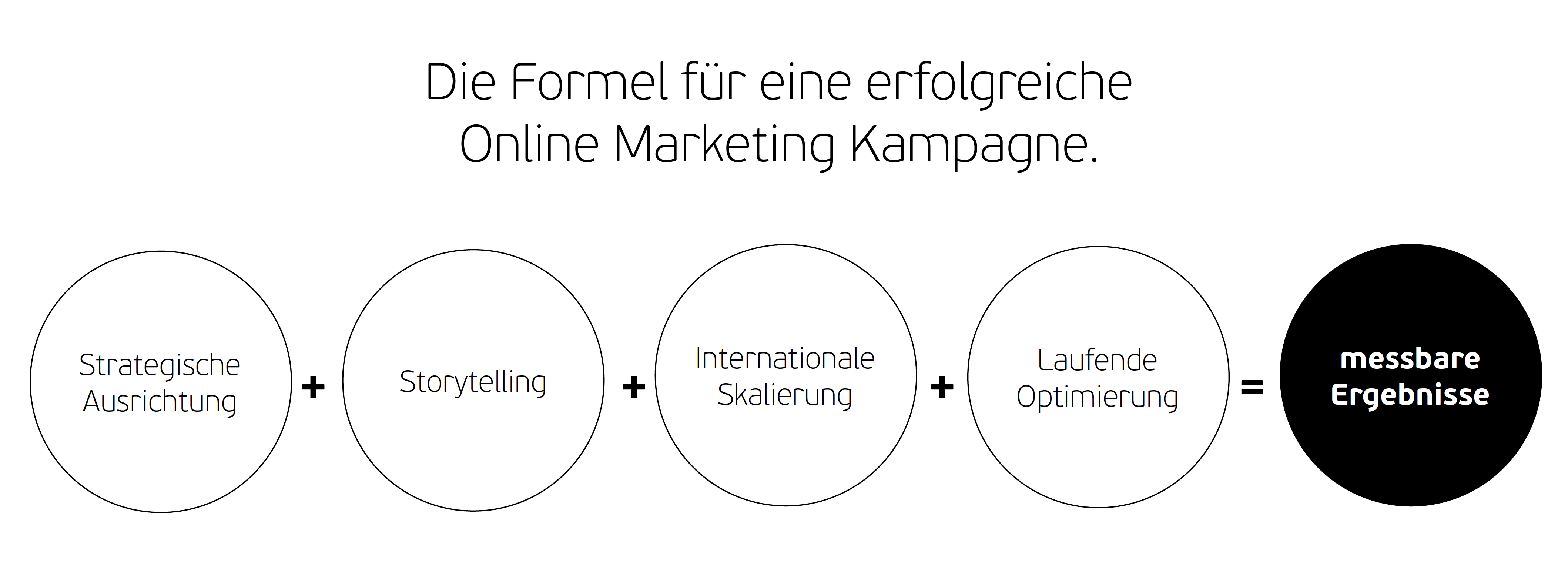

Do you want to stay ahead of the game with your marketing strategy next year? Thanks to digital technologies, there are several developments in B2B marketing that you should keep an eye on.
Only people who understand the latest trends can keep up with them and take advantage of them. As an advertising agency, we have to stay relevant – and react immediately when new and emerging strategies and channels establish themselves on the market. That's why anticipating future marketing trends is part of our job and a key component of successful concepts. To continue to serve target groups precisely in the future and provide added value to our clients, these B2B marketing trends in 2024 are crucial for us:
The progressive integration of AI is one of the most significant changes in B2B marketing. Especially in time-consuming tasks, AI can support with inspiration, analysis and automation without rendering specialists obsolete. On the contrary: by lightening the workload, it also creates more freedom for creativity, comprehensive analyzes and strategic optimization in our agency. AI also creates meaningful measurability, which is extremely valuable for all marketers. Real-time analysis of large amounts of data enables tailored customer experiences and personalized content for better client loyalty. This makes it possible to evaluate customers’ past behavior and interactions, enabling informed decisions about relevant content and products. It also enables proactive strategies that fulfil customer needs they may not even be aware of!

AI tools can help identify target audiences and address them precisely, improve campaigns or optimize ad placements. With clear prompts, chatbots like Chat GPT, for example, become smart assistants for competitor analysis, email and content marketing, SEO or social media: What type of content does the competitor often publish on their social media channels? What might a keyword strategy and SEO content plan look like for a particular topic? Which captions and hashtags go with a particular post on Instagram? Integrate AI tools into your marketing to achieve greater efficiency and time savings, but don't ignore their weaknesses! Be aware that not all content generated is always accurate, that the content is not unique, that no personal data should be entered and that Google recognizes content as "near duplicate content" – i.e. content that is similar to other content Google already knows – what can lead to ranking losses or lack of indexing. You should also be careful when using text-to-image generators such as Dall-E3 or Midjourney, as the legal situation is still not clear. However, they are great tools for inspiration and brainstorming. You will soon be able to read about the tools and how we use them in the agency here in the blog. We have already created several articles, webinars and a podcast on the topic of AI. Just click here!
Never miss a thing?
Always up to date in 2024:
Sign up for the B2B Experience Hub newsletter here!
The automation of marketing processes is not new but it has evolved into a highly sophisticated and extremely efficient way for sending personalized and timed content to the target audience. Advancing technology enables more precise and engaging automation that takes interactions with potential clients to new levels. Marketing automation platforms like Hubspot use advanced algorithms and AI to create comprehensive customer profiles that consider audience demographics, behavior, interactions, and preferences to fill a CRM with this information. Recurring marketing tasks are automated whilst personalized content is provided to the target audience based on this data. For example, opening an email or visiting a specific website can then automatically trigger predefined marketing actions. The target group is reached via various communication channels and, above all, at the best possible time. Increasing personalization, targeted language, and more relevant content significantly increase the likelihood of a positive response and interaction. This improves lead qualification and the targeted resource allocation. This is particularly the case when continuous data analysis is incorporated into the ongoing optimization of campaigns and marketing services! Especially at trade fairs - that have enormous potential for acquiring new customers - you can improve your lead generation enormously (Link: Blogartikel Leadgenerierung) if you take targeted measures before, during and after the trade fair, in line with products the user is interested in and has actually viewed at the trade fair. Automated, uniform brand communication across various channels also strengthens trust in the brand.

Content marketing will continue to play a key role. However, the focus will not only be on providing content, but also on positioning your company as a thought leader and industry expert (thought leadership). Customers have become more demanding, are increasingly seeking expertise and demanding in-depth, transparent knowledge. High-quality and innovative content provides relevant insights and unique solutions, addressing the target group’s current challenges and interests, offering them real added value. This will also help you stand out from the mass of AI-generated content that is being published all the time. Deep-dive content for download plays a crucial role in lead generation, as customers with a deeper interest in specific topics are usually further along in their decision-making process. Thought leadership is a long-term strategy that not only builds brand image but also customer loyalty, credibility and trust. Storytelling is essential for creating an emotional connection to a brand or company: it prepares content for target groups in an engaging and memorable way, creating a connection. Storytelling works best when it is seamless, from the ad to the landing page content to the download.
The integrative approach of omnichannel strategies aims to provide a unified and seamless brand experience for customers across all available platforms and touchpoints. Customers often switch between different channels but still expect coherent brand interaction, requiring connecting online and offline channels and a clear, unified brand identity. Remarketing in digital marketing consistently presents messages and offers, reinforcing and increasing brand recognition. It also makes it possible to track customer interactions at various touchpoints, like the landing page. For example, if a potential customer viewed a white paper on the website, remarketing could ensure that they also see other relevant downloads on social media or other platforms, such as a webinar on the same topic. Effective data exchange between channels and effective data integration ensures a complete picture of customer behavior and accurate analysis of the customer journey. This supports targeted communication in the various phases of the purchasing process. An omnichannel strategy goes far beyond simply being present on different channels. Channel integration, combined with a consistent brand message, data-driven adjustments and a clear focus on customer expectations, improves the customer experience and creates stronger brand loyalty.

In 2024, ABM will reach new heights in the development and implementation of highly personalized marketing campaigns for specific target accounts or companies. Unlike broader target audience approaches, ABM specifically targets individual key customers or stakeholders of a company - i.e. specific target accounts with high strategic importance. By focusing on meeting their needs and requirements precisely, deep relationships are built through various channels. Selecting the right target accounts is crucial, as is thorough data analysis of behaviour, preferences, and needs to design personalized content and targeted marketing campaigns. Advanced data analysis methods and predictive analytics enable the right target accounts to be identified and addressed more precisely. For maximum efficiency, sales and marketing should work collaborate closely, setting goals and developing strategies that lead to the best possible interaction with target accounts.
Conclusion:
The future of brand communication relies on integration and data-driven strategies. With the ongoing development of marketing technologies and increasing data availability, B2B companies will be able to measure and optimize the success of their campaigns even more accurately in the coming year. Don't forget to define and track clear performance metrics! At SPS MARKETING, we are already successfully implementing the B2B marketing trends for 2024 for our clients: Digital campaigns for clients like Magna or Weller Tools demonstrate the efficiency of marketing automation in lead generation or the effectiveness of content marketing. With seamless integration through omnichannel strategies and a targeted approach to target accounts through ABM, we help our clients be successful in the dynamic environment of B2B marketing. Learn more about selected successful cases here.
